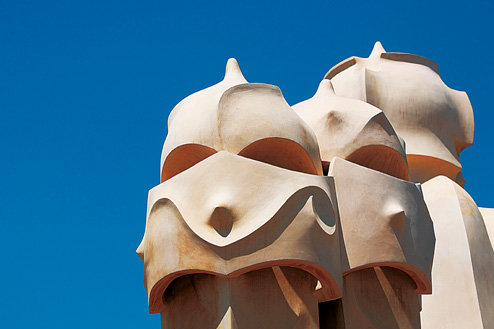l’Hospitalet de Llobregat EX
Strictly speaking, L’Hospitalet de Llobregat is not a district of Barcelona, but a city in its own right. However, it is joined to Barcelona’s west flank and there are several L’Hospitalet stops on the metro network. It is divided into six districts of which Centre, the administrative and commercial heart, is the oldest and most important. It incorporates the barrios of Sant Josep and Sanfeliu along with one known as Centre itself.
Most neighbourhoods are tucked in between the site of the original Hospitalet in Centre and metropolitan Barcelona. They include Les Planes, La Florida, Collblanc and Torrasa. Further west are the areas of Can Serra and Pubilla Cases while to the south of Centre lies Bellvitge and Gornal. The city’s south used to stretch to the sea but L’Hospitalet traded in its coastal areas to Barcelona, which has used the space to create the docks and free port. Several railway lines leave Barcelona and cut through L’Hospitalet, dividing its districts from one another. There are plans to resolve this by covering the tracks with parks. Developments like the tower blocks of Bellvitge were typical of rushed housing thrown up with little regard to infrastructure in the middle of the last century. The citizens of L’Hospitalet campaigned long and hard until service improvements began in the 80s. Today it is a modern and attractive city with impressive parks and cultural centres, sports facilities, schools and hospitals. Its people, meanwhile, keep a reputation for communal campaigning.
Most neighbourhoods are tucked in between the site of the original Hospitalet in Centre and metropolitan Barcelona. They include Les Planes, La Florida, Collblanc and Torrasa. Further west are the areas of Can Serra and Pubilla Cases while to the south of Centre lies Bellvitge and Gornal. The city’s south used to stretch to the sea but L’Hospitalet traded in its coastal areas to Barcelona, which has used the space to create the docks and free port. Several railway lines leave Barcelona and cut through L’Hospitalet, dividing its districts from one another. There are plans to resolve this by covering the tracks with parks. Developments like the tower blocks of Bellvitge were typical of rushed housing thrown up with little regard to infrastructure in the middle of the last century. The citizens of L’Hospitalet campaigned long and hard until service improvements began in the 80s. Today it is a modern and attractive city with impressive parks and cultural centres, sports facilities, schools and hospitals. Its people, meanwhile, keep a reputation for communal campaigning.













